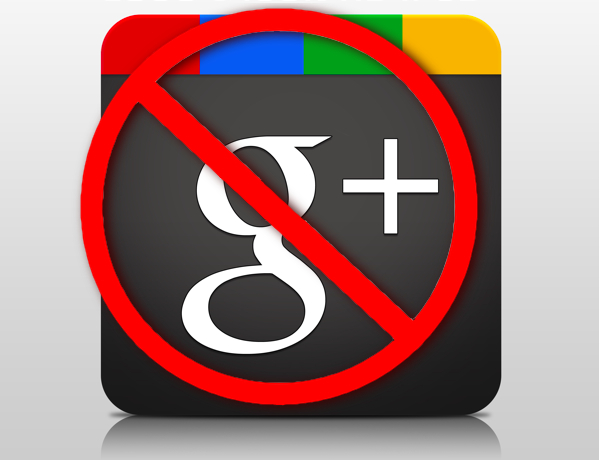When Google+ first launched, my feelings about it were more or less the same feelings I have about another Star Wars movie. I feel like I should get behind it and try to support it because it seems like a good production team, and I do love the others that came before it. However, I couldn’t help but ask, “Is it really necessary?”

With Google+ reportedly raising the white flag and disseminating its team into other parts of the company, Google has admitted what most of the world knew all along: there’s just not room for another major social network in people’s lives.
Many of us were skeptical of the odds of success for Google+ from the get-go. Simply put, it was just too similar to Facebook. Honestly, everyone had invested so much time and energy to build Facebook friends, photo galleries, groups and more, why would anyone jump ship? Or why would anyone take the time to manage two major social networks?
Besides, in the meantime, another dynamic emerged. It gets a little old seeing photo after photo of other people’s vacations, food and babies. Interacting and posting on your Facebook account has become something of a chore for many users. Hence, the rise of Twitter, Snapchat, Instagram and other more immediate, hit-and-run style social networks.
Using Facebook – and Google+ – requires users to invest time that the other social platforms do not. To Facebook’s credit, users spend much more time on Facebook than any other site. The flip side of this for many is a certain level of exhaustion.
This exhaustion means that users rolled their eyes at the idea of logging in to another social site. Google tried to alleviate this hurdle by integrating Google+ with every single part of their ecosystem – YouTube, search, Gmail – so you couldn’t avoid it.
But people did avoid it. In fact, this integration often resulted in users needing to create new logins for platforms like YouTube – often inadvertently winding up with multiple accounts and, in some cases, no idea how to access the channel they had curated for years. Maybe I’m speaking from personal experience. Maybe I’m not. Either way, it wasn’t as seamless of a process as Google was hoping it would become.
Some companies jumped on it immediately and whole-heartedly. Indeed, somewhere out there, there’s a bloomfield knoble Google+ page, as well as one for all of our clients. It was a land-grab. But we adopted a wait-and-see approach on behalf of our clients because our assessment was that the platform needed to reach a critical user mass before it would be of any use to anybody or pose any semblance of a threat to Facebook.
I realize that created a chicken-and-egg scenario, but why waste our time and our clients’ time just for the sake of early adopter bragging rights?
Eventually, with Google favoring Google+ mentions in its search, that became the only reason to set up a page. That said, many felt like that was a form of bullying by a company increasingly becoming more involved in every aspect of our lives.
The point is, social media moves and changes fast. Even the established players like Twitter, Facebook and LinkedIn change interfaces, algorithms and design often enough that it can be hard for the every day user to keep up. (Did you know that within the last week both Facebook and Twitter made major updates to business management and design, respectively?)
Assessing these changes and the need to jump on board, and when – especially something huge like an entirely new platform – is key to making the most use of your resources. As Google possibly prepares to put Google+ out to pasture, our clients can look back and know we made the right recommendation to them. They asked and we responded to save some money and wait for the necessity. It paid off, literally.
Now let’s keep our fingers crossed about that Star Wars movie.
Thanks to the shortening of attention spans and his inability to finish a novel (phenomena that are unrelated, he assures us), Jeff Carrington has found the perfect job for himself as director of communications and social media at bloomfield knoble. When he’s not developing social strategies for clients in 140 characters or less, he’s tweeting about dive bars and dog parks, both of which he frequents with his Spitz-Terrier mix buddy, Ben, and other random humans.

